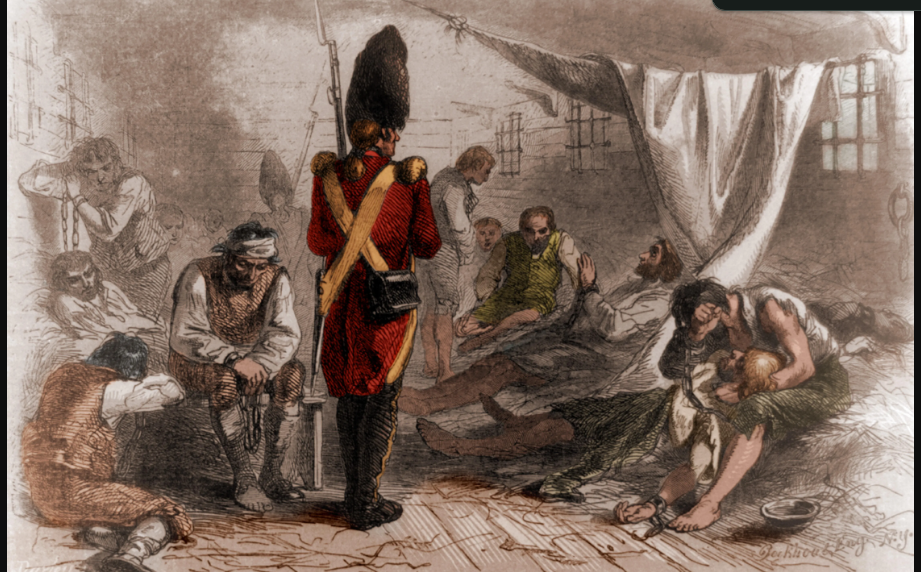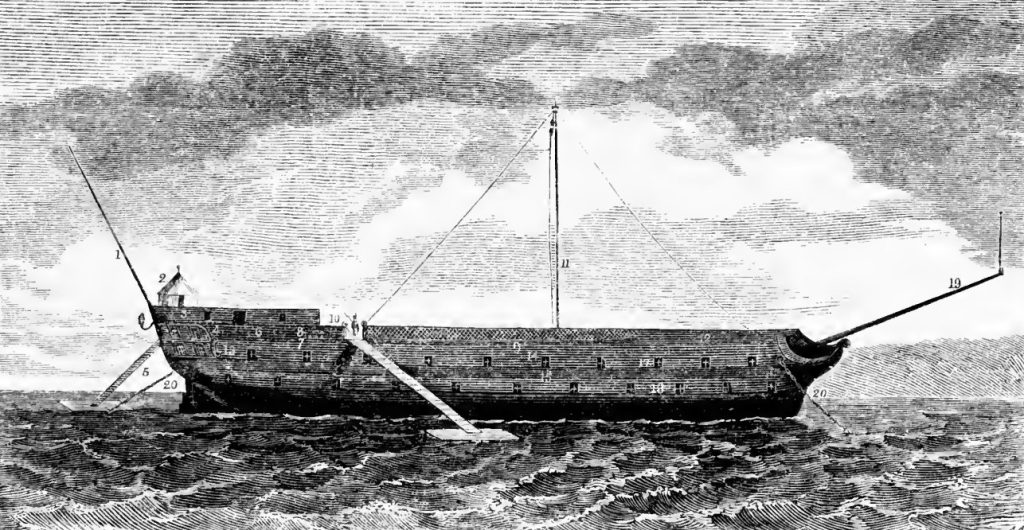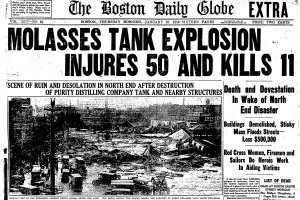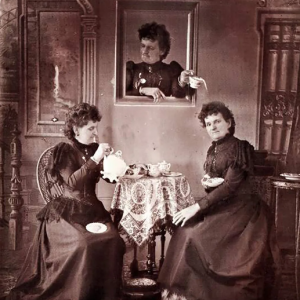

Prison Ships of the American Revolution
Of all the historic events that took place during the American Revolution and of all the landmarks and markers we have on the East Coast, Brooklyn and “ghost ships” are not two of the most popular. However, during the war, the British held prisoners in “floating dungeons,” otherwise known as ghost ships. These were said to be worse than most of the land-bound prisons for multiple reasons.
The historical impact of the ghost ships is interesting in the fact that they counter the ideal British commentary of a “gentleman’s war”.
“Few vessels can equal the disgraceful record of the British prison ships in the American Revolution.” – U.S. Naval Institute

The first ship, the Whitby, anchored in 1776 and was the lone prison until 1777. There were about 16 of these prison ships with the Jersey being one of the most well known. According to author Robert P. Watson there was an estimated 11,500 men who died aboard the Jersey in Wallabout Bay in the East River. The testimonies of the men aboard are nothing if not grotesque when referring to the food, lack of room to sit, let alone lay, for days on end, and the overflowing waste buckets.
“There were continual noises during the night,” wrote Thomas Dring, a captured master’s mate from a privateer, age 25. “The groans of the sick and the dying; the curses poured out by the weary and exhausted upon our inhuman keepers; the restlessness caused by the suffocating heat and the confined and poisoned air; mingled with the wild and incoherent ravings of delirium.”- History.com
Not to mention the ever-popular diseases and other old ship nuisances like lice. I think one of the worst parts of being a prisoner on these ghost ships was the claim that sometimes it took days for the guards to come and remove those who had died in the night. Meaning, their bodies just stayed right where they were. There was time for prisoners to come above deck for fresh air and sun, but this was mostly to allow time for cleaning and removing bodies before forcing them back below deck.
Jersey (Brooklyn, NY)
Of all the historic events that took place during the American Revolution and of all the landmarks and markers we have on the East Coast, Brooklyn and “ghost ships” are not two of the most popular. However, during the war the British held prisoners in “floating dungeons” otherwise known as ghost ships. These were said to be worse than most of the land bound prisons for multiple reasons.
The first ship, the Whitby, anchored in 1776 and was the lone prison until 1777. There were about 16 of these prison ships with the Jersey being one of the most well known. According to author Robert P. Watson there was an estimated 11,500 men who died aboard the Jersey in Wallabout Bay in the East River. The testimonies of the men aboard are nothing if not grotesque when referring to the food, lack of room to sit, let alone lay, for days on end, and the overflowing waste buckets.
“There were continual noises during the night,” wrote Thomas Dring, a captured master’s mate from a privateer, age 25. “The groans of the sick and the dying; the curses poured out by the weary and exhausted upon our inhuman keepers; the restlessness caused by the suffocating heat and the confined and poisoned air; mingled with the wild and incoherent ravings of delirium.”- History.com
Not to mention the ever popular diseases and other old ship nuisances like lice. I think one of the worst parts of being a prisoner on these ghost ships was the claim that sometimes it took days for the guards to come and remove those who had died in the night. Meaning, their bodies just stayed right where they were. There was time for prisoners to come above deck for fresh air and sun, but this was mostly to allow time for cleaning and removing bodies before forcing them back below deck.
The historical impact of the ghost ships is interesting in the fact that they counter the ideal British commentary of a “gentleman’s war”.
Patriotism on the Jersey (Brooklyn, NY)
One of the age old questions when discussing horrific conditions of the past is “why didn’t they revolt?” “why did no one fight?”
Well, for one those imprisoned were malnourished, not to mention possibly wounded from battle. There was also the ever present threat of death for even attempting escape. Not that there weren’t attempts, just very few successes.
However, in a brazen act of rebellion, there was a group of patriots who stood up to the British captors. On July 4, 1782, some prisoners onboard Jersey decided to celebrate Independence Day, which included songs. At this point it’s easy to say the British were a little disheartened by how the war was progressing so maybe that’s why the songs of the prisoners set them off so much that day. The British forced the men back below deck with their bayonets and locked them in. The singing continued despite being put back in the dark. A few guards opened the hatch to the deck and violently thrashed their cutlasses into the air cutting into anyone in their reach. They then closed the hatches back and locked them, leaving the wounded to bleed out and die. In the morning ten men were brought up and tossed overboard.
New Stuff

